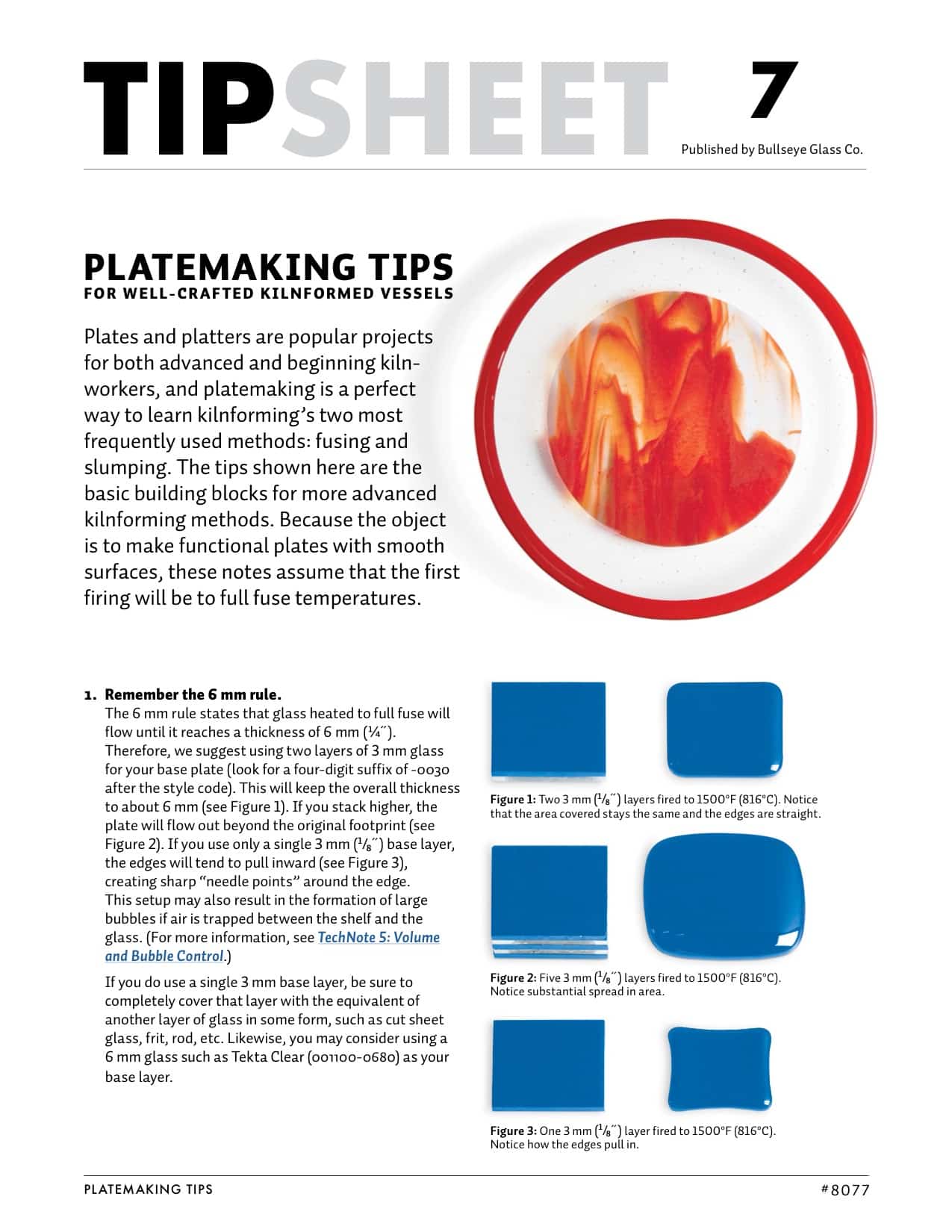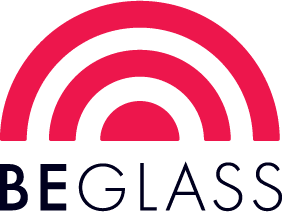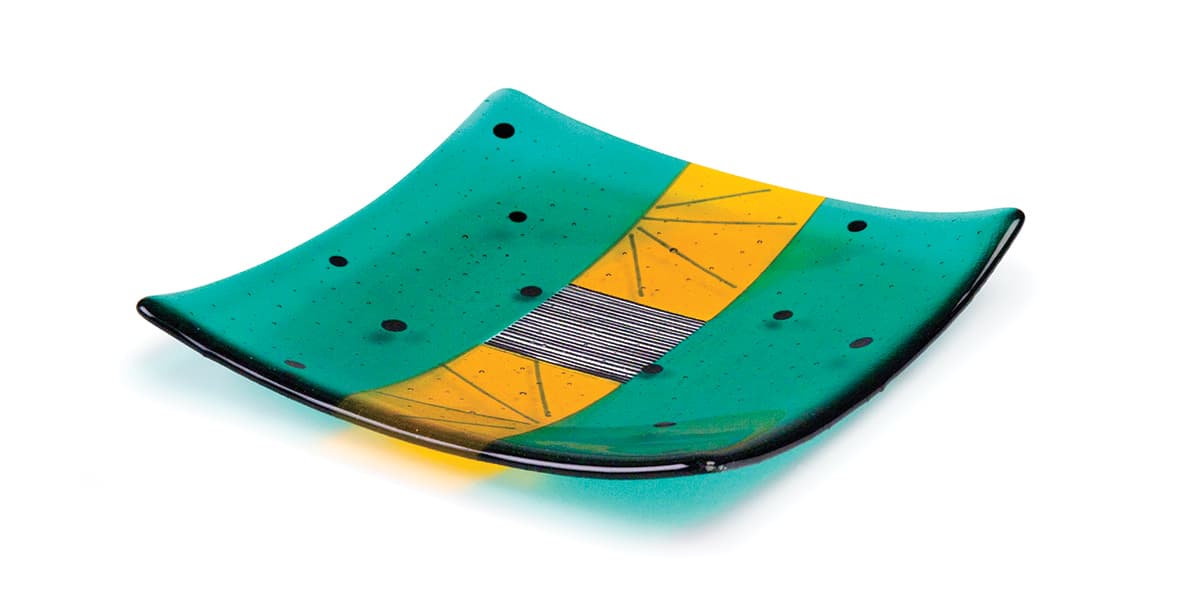Plates and platters are popular projects for both advanced and beginning kilnworkers, and platemaking is a perfect way to learn kilnforming’s two most frequently used methods: fusing and slumping. The tips shown here are the basic building blocks for more advanced kilnforming methods. Because the object is to make functional plates with smooth surfaces, these notes assume that the first firing will be to full fuse temperatures.
Remember the 6 mm rule. The 6 mm rule states that glass heated to full fuse will flow until it reaches a thickness of 6 mm (¼˝). Therefore, we suggest using two layers of 3 mm glass for your base plate (look for a four-digit suffix of -0030 after the style code). This will keep the overall thickness to about 6 mm (see Figure 1). If you stack higher, the plate will flow out beyond the original footprint (see Figure 2). If you use only a single 3 mm (1/8˝) base layer, the edges will tend to pull inward (see Figure 3), creating sharp “needle points” around the edge. This setup may also result in the formation of large bubbles if air is trapped between the shelf and the glass. (For more information, see TechNote 5: Volume and Bubble Control.) If you do use a single 3 mm base layer, be sure to completely cover that layer with the equivalent of another layer of glass in some form, such as cut sheet glass, frit, rod, etc. Likewise, you may consider using a 6 mm glass such as Tekta Clear (001100-0680) as your base layer.
Keep the design elements at least ¾˝ (19 mm) from the edge. Once you have a 6 mm base, use small pieces of thin cut glass, frit, powder, or stringer to create your design. Keep any heavy applications away from the edge. Piling a lot of glass at the perimeter will cause the glass to flow out and distort the shape of your plate at the edge. It may also result in the formation of bubbles between the base layers. (See also TechNote 5: Volume and Bubble Control.)
For the cleanest release, use an iridescent glass (coated side down) against the shelf. Bullseye iridescent glasses (styles with a four-digit suffix of -0031, -0037, or -0038 after the style code) get their metallic sheen from a thin film of tin on the surface. Tin has a higher melting point than glass and on firing will not pick up shelf separators such as primer or the tiny fibers from fiber paper as readily as raw glass. Consider cutting a layer of iridescent glass for your base and using another glass as your top layer. Use a silver iridescent clear (001101-0037-F) base if you do not want the varied coloration of a clear rainbow iridescent (001101-0031-F). Note that this recommendation applies only when firing on a primed kiln shelf or on fiber paper. We do not recommend firing iridescent surfaces against ThinFire shelf paper. Doing so may result in surface pitting, most frequently in pieces with multiple firings.


